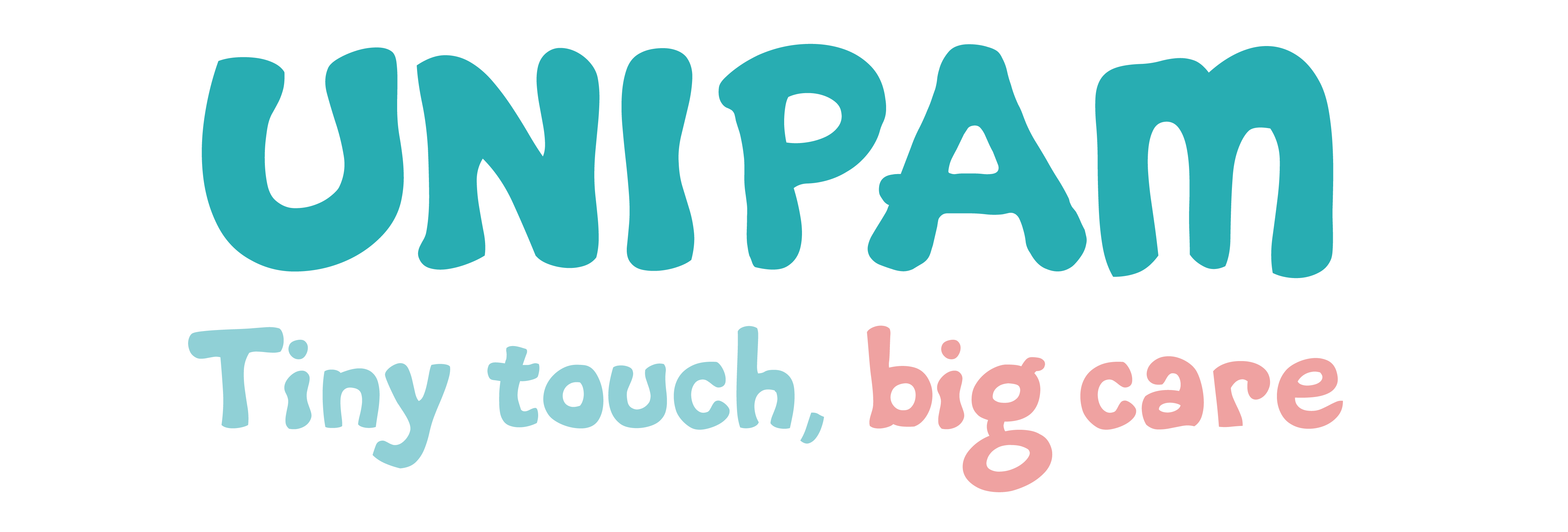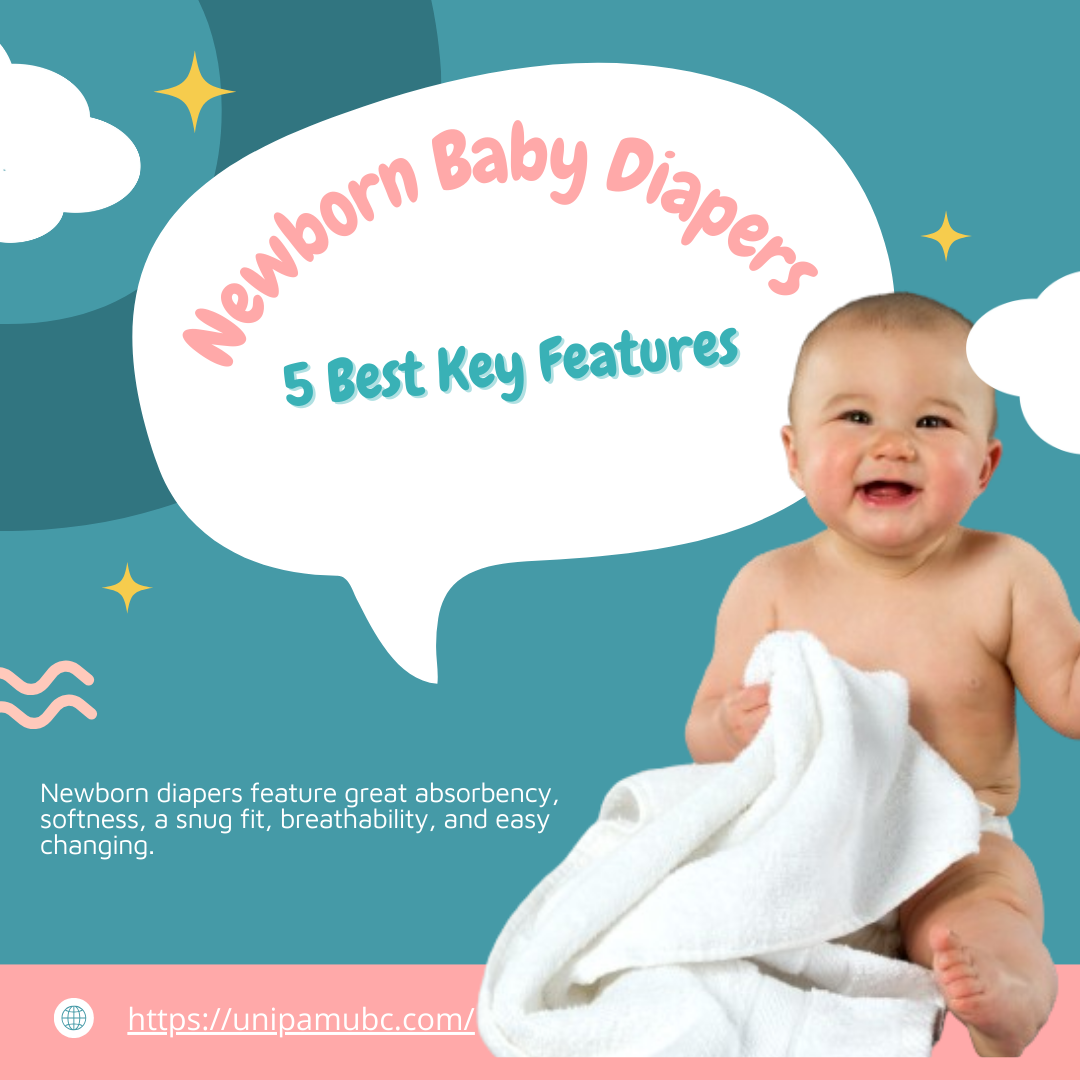Welcoming a newborn into the family brings immense joy, but it also brings the challenge of navigating through numerous baby products, including the most essential one—Newborn baby diapers. Whether you’re a first-time parent or already have children, finding the perfect Newborn baby diapers for your newborn is an essential part of ensuring their comfort, health, and overall well-being.
In this article, we will explore the five key features of the best newborn Newborn baby diapers and how these features can make all the difference for your baby. From superior absorbency to soft materials and more, understanding these key aspects will help you make an informed decision that benefits both you and your baby.
Why Choosing the Right Newborn Baby Diapers Matters
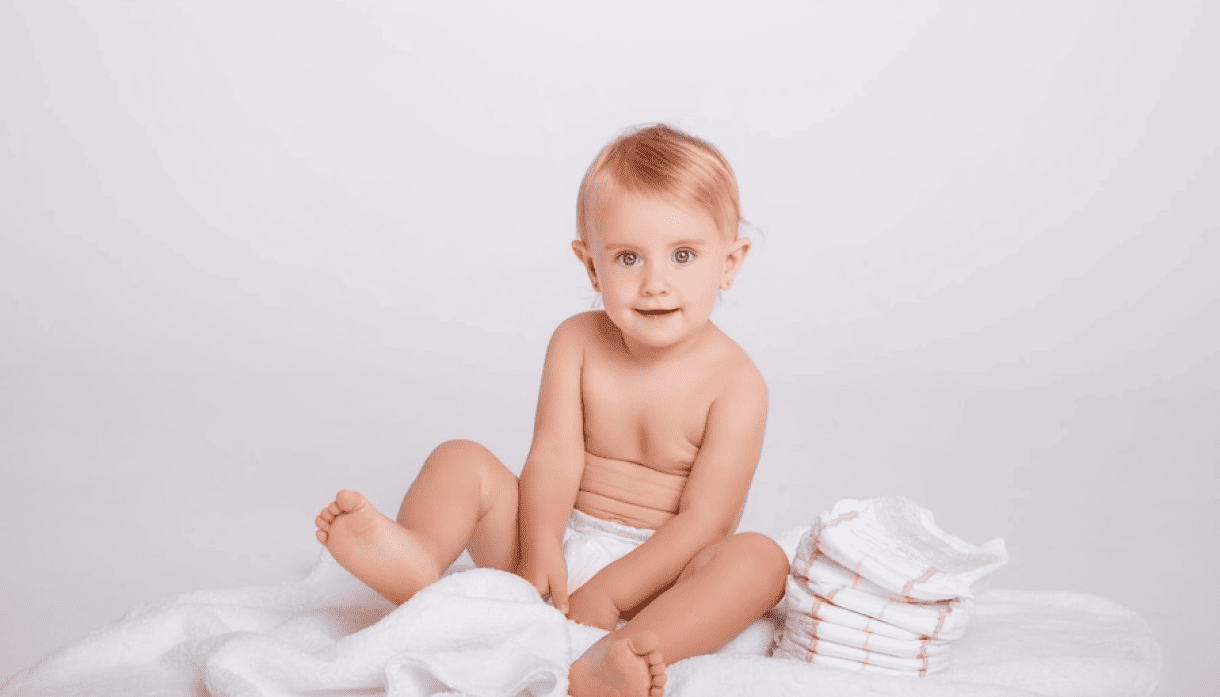
Newborn babies have delicate, sensitive skin and require extra care, especially in the early months. Diaper rash, discomfort, and leaks can affect your baby’s sleep, mood, and health, which is why choosing the right Newborn baby diapers is crucial. Not all baby diapers are created equal, and understanding what sets the best ones apart can ensure your baby stays dry, happy, and rash-free.
The following five key features are essential in providing your baby with the best care and ensuring their baby diapers offer optimal performance.
1. Superior Absorbency: Keeping Your Baby Dry
One of the most important features of any baby diapers is absorbency. Newborns tend to urinate frequently, and if the diaper is unable to absorb moisture efficiently, it can lead to discomfort and even diaper rash. Therefore, selecting baby diapers with superior absorbency is a must.
a. What Makes a Diaper Absorbent?
The absorbency of baby diapers is typically determined by the materials used in their construction. Most disposable baby diapers contain super absorbent polymers (SAPs), which can hold several times their weight in liquid. This ensures that moisture is locked away from your baby’s skin, keeping them dry even after multiple wettings.
b. The Importance of Leak Protection
Leak protection is directly linked to the absorbency of the diaper. High-quality baby diapers feature multiple layers designed to pull moisture away from the skin while preventing leaks, especially around the legs and waist. When looking for Newborn baby diapers, ensure that they provide full coverage and have elastic leg cuffs and waistbands to prevent leaks.
c. Overnight Absorbency
For nighttime use, you may need to look for Newborn baby diapers specifically designed for overnight wear. These diapers offer extra layers of protection and increased absorbency, ensuring that your baby can sleep soundly without waking up due to wetness or discomfort. Overnight Newborn baby diapers are designed to last longer between changes, making them a valuable addition to your diapering routine.
2. Soft, Hypoallergenic Materials: Gentle on Baby’s Skin
Newborn skin is incredibly sensitive, and using baby diapers made from harsh materials can lead to rashes, redness, and irritation. This is why the softness and hypoallergenic nature of the materials used in baby diapers are crucial factors to consider.
a. Choosing Hypoallergenic Diapers
Hypoallergenic baby diapers are specially formulated to reduce the risk of allergic reactions and skin irritations. These diapers are free from chemicals such as fragrances, dyes, and latex, which are often responsible for causing irritation. For newborns with extremely sensitive skin, hypoallergenic baby diapers can provide a safer, more comfortable option.
b. Breathable Fabric for Enhanced Comfort
The fabric used in the construction of Newborn baby diapers should be breathable, allowing air to circulate around the baby’s skin. Breathability is essential for preventing diaper rash and promoting overall skin health. High-quality baby diapers feature a breathable outer layer while still being waterproof, providing the best of both worlds—dryness and airflow.
c. Soft Inner Lining
The inner lining of baby diapers, which comes into direct contact with your baby’s skin, should be soft and smooth. Many baby diapers include aloe vera or other soothing ingredients in their linings to help keep your baby’s skin healthy and moisturized. When shopping for Newborn baby diapers, look for those with a soft inner lining to ensure maximum comfort.
3. Perfect Fit: Ensuring Comfort and Mobility
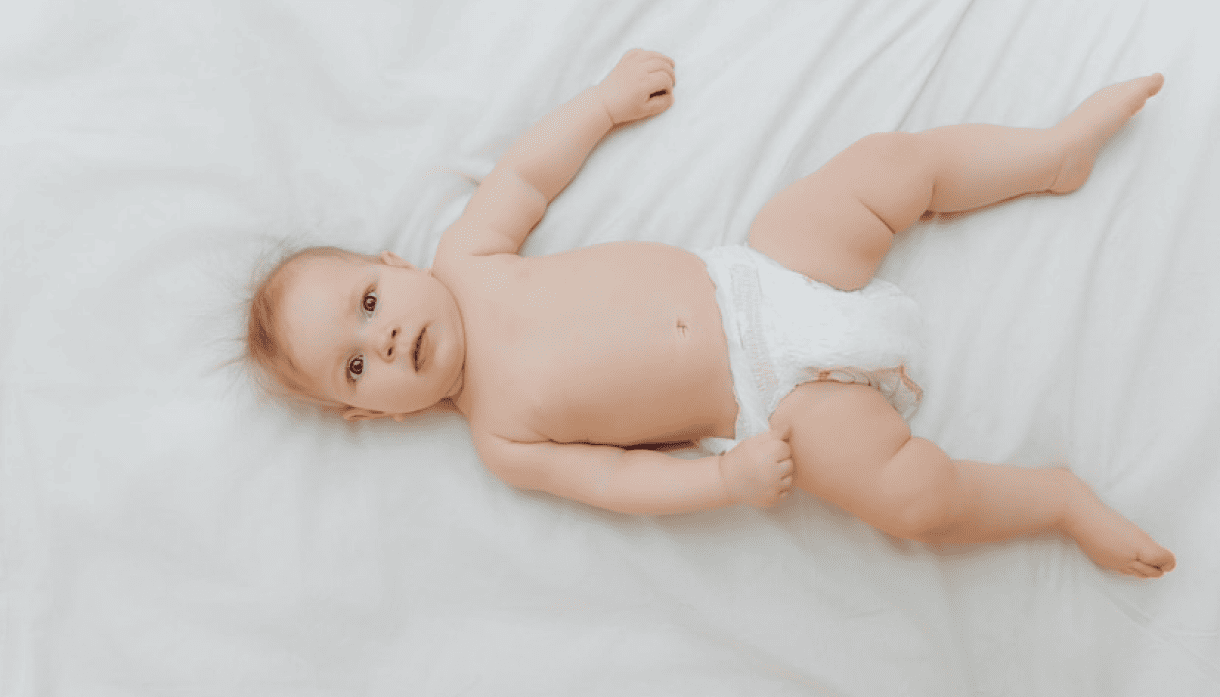
One of the most common problems with poorly designed baby diapers is that they do not fit properly, which can cause leaks, discomfort, and restrict your baby’s movement. A proper-fitting diaper will not only prevent leaks but will also allow your baby to move freely without causing friction or irritation.
a. Sizing Matters
When it comes to baby diapers, getting the size right is essential. Diapers that are too small may fit too tightly, leading to red marks and discomfort, while diapers that are too large may cause leaks due to gaps around the legs and waist. Most brands provide weight ranges on their packaging to help you choose the appropriate size.
b. Stretchy Waistbands and Leg Cuffs
The best Newborn baby diapers feature stretchy waistbands and leg cuffs that provide a snug but comfortable fit. These elements allow the diaper to adjust to your baby’s movements, ensuring that the diaper stays in place without being too tight or restrictive. A well-fitted diaper will allow your baby to move freely, crawl, and eventually walk without discomfort.
c. Adjustable Tabs for a Custom Fit
Adjustable tabs are another feature to look for in baby diapers. These tabs enable you to secure the diaper more tightly or loosely depending on your baby’s size, ensuring a customized fit that minimizes the risk of leaks. Some premium baby diapers also come with resealable tabs, allowing you to check the diaper without removing it entirely.
4. Wetness Indicator: Knowing When to Change
One of the most useful innovations in modern Newborn baby diapers is the wetness indicator. This feature allows parents to easily determine when a diaper needs to be changed without having to guess or frequently check.
a. How the Wetness Indicator Works
The wetness indicator is a small strip or line on the outside of the diaper that changes color when the diaper becomes wet. This simple yet effective feature saves parents time and helps prevent unnecessary diaper changes, while ensuring that you don’t leave a wet diaper on for too long, which can lead to diaper rash.
b. Benefits for New Parents
For new parents, the wetness indicator is a game-changer. It provides peace of mind, especially during the first few months when babies may wet their diapers frequently. This feature is particularly helpful during nighttime feedings, as it allows parents to quickly check if the diaper needs changing without fully waking the baby.
c. Not All Diapers Have Wetness Indicators
While many brands include wetness indicators, not all baby diapers have this feature. If you find this feature particularly useful, make sure to choose a brand that includes it, as it can make your diapering routine much more efficient.
5. Eco-Friendly Options: Caring for Your Baby and the Planet
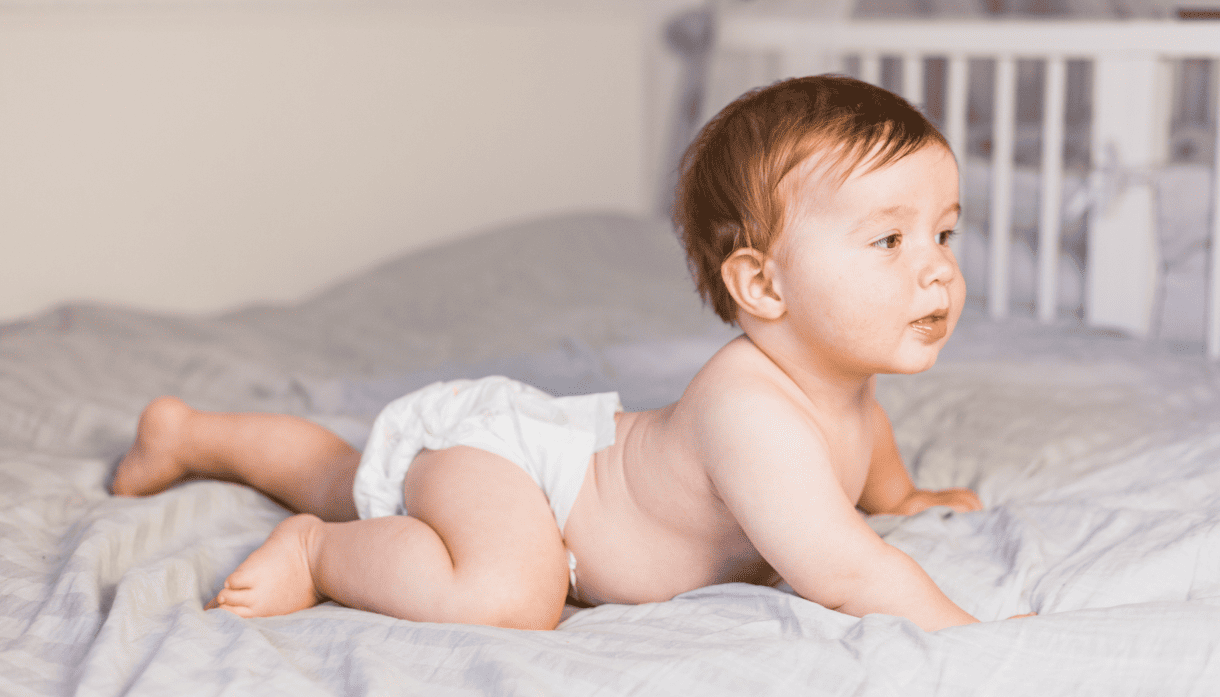
In recent years, many parents have become more conscious of the environmental impact of disposable baby diapers. If you’re concerned about sustainability, eco-friendly baby diapers offer a greener alternative that still provides excellent performance.
a. Biodegradable Diapers
Eco-friendly disposable baby diapers are often made from biodegradable materials that break down more quickly than traditional diapers. These baby diapers are designed to reduce the amount of waste that ends up in landfills, making them a more environmentally responsible choice.
b. Cloth Diapers as a Sustainable Option
Another option for eco-conscious parents is cloth baby diapers. Unlike disposable diapers, cloth diapers can be washed and reused, reducing the environmental footprint. Modern cloth Newborn baby diapers are more user-friendly than ever before, with convenient designs that include absorbent inserts and adjustable snaps for a customizable fit.
c. Compostable Diapers
Some brands now offer compostable Newborn baby diapers, which are designed to be fully broken down in a composting environment. These Newborn baby diapers are made from plant-based materials and provide the same level of absorbency and comfort as traditional disposable diapers but with a significantly lower environmental impact.
Conclusion: Finding the Perfect Baby Diapers for Your Newborn
Choosing the right baby diapers for your newborn is a critical decision that can significantly impact your baby’s comfort, health, and happiness. By focusing on the five key features—superior absorbency, soft materials, a perfect fit, wetness indicators, and eco-friendly options—you can ensure that your baby stays dry, comfortable, and rash-free throughout the day and night.
Whether you opt for disposable or cloth baby diapers, these key features should be at the top of your list when making your decision. Keep in mind that every baby is unique, and it may take some trial and error to find the brand and type of diaper that works best for your little one.
FAQs on Baby Diapers
- How many diapers will my newborn need per day? Newborns typically require around 10 to 12 baby diapers per day in the first few weeks.
- Are cloth diapers better than disposable ones? Cloth Newborn baby diapers are more eco-friendly and reusable, but disposable diapers offer convenience and are easier to use, especially when traveling.
- What should I do if my baby develops diaper rash? If your baby develops a rash, switch to hypoallergenic baby diapers and apply a diaper rash cream. Consult a pediatrician if the rash persists.
- Can I use the same brand of diapers for day and night? Many parents use different Newborn baby diapers for day and night, as overnight diapers offer enhanced absorbency.
By understanding and prioritizing these key features, you’ll be well on your way to ensuring that your baby has the best possible experience with their Newborn baby diapers, making parenting just a little bit easier.
